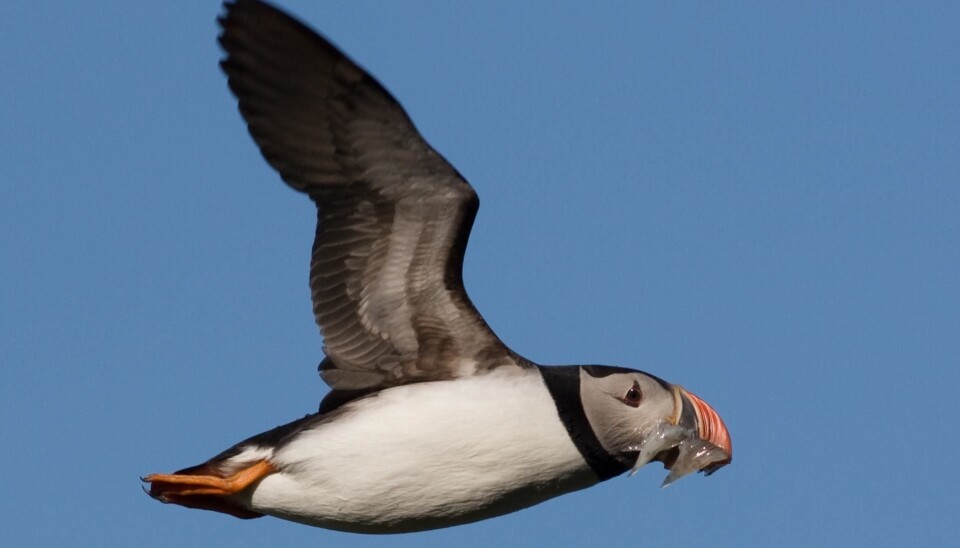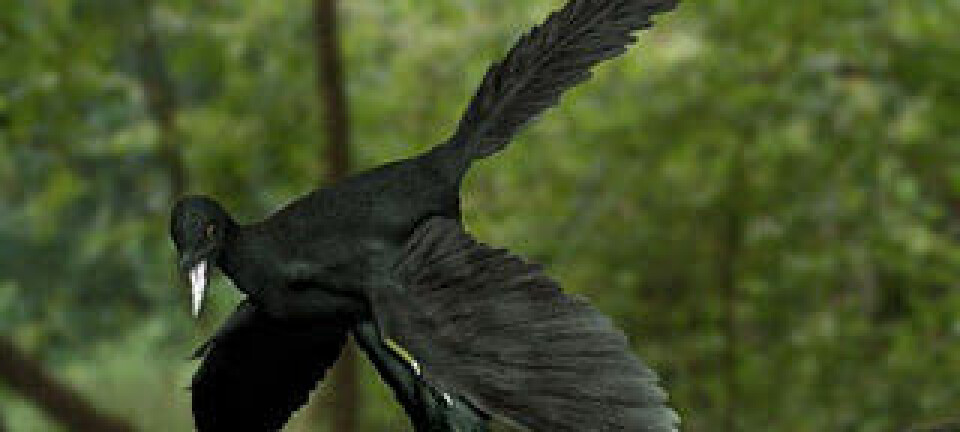This article was produced and financed by NINA - Norwegian Institute for Nature Research

How much food do seabirds need?
Many seabirds begin to suffer when the food available for them in the ocean declines below a critical level. This level is about one-third of the maximum amount of food available.
Denne artikkelen er over ti år gammel og kan inneholde utdatert informasjon.
An international group of scientists have found a consistent pattern for the correlation between seabirds’ breeding success and food availability that applies globally.
The study – the most comprehensive ever undertaken - covers birds from the Arctic to the Antarctic and from the Pacific to the Atlantic, and was recently published in Science.
The study focuses on seabirds that feed mainly on fish like sardines, anchovies, herring and sandeels. These are often key species in marine ecosystems that are often exploited by fisheries.
In the Antarctic these fish species are replaced by krill which are tiny shrimp-like invertebrates.
The researchers used data collected on 14 different seabird species including guillemots, gannets, skuas, terns, kittiwakes, puffins and penguins. Oservation periods were from 15 up to 47 years.
The birds' breeding success was linked to access to food in the region around their breeding colonies.
In total the study gathered 438 years of observations, which constitutes one of the most comprehensive global databases ever assembled for predators and their prey.
One-third for the birds
The researchers found that wherever the seabirds occurred in the world, the effect of low fish abundance was similar.
When the amount of fish in the sea was greater than one-third of the maximum ever recorded, the number of chicks produced was unaffected by changes in food availability.
But if the fish abundance fell below this one-third threshold then the breeding success declined.
"We were amazed by the consistency of the relationship around the globe. This suggests that we have found an important benchmark that could be used as a guide to limit the amount of fish taken from the sea in order to maintain seabird populations in the long term”, says Dr Philippe Cury of the French Research Institute for Development (IRD), leader of the research team.
Seabirds as ecosystem indicators
The team was stimulated to undertake their study by the current concerns about the effects that fishing may be having upon some of these important species in marine ecosystems.
"When combined with the effects of climate change, we need to develop better methods for setting the limits of exploitation of important marine species. This means being able to establish general guidelines that, if exceeded, will cause changes to other important components in the ecosystems.
"Seabirds are some of the best and most easily measured indicators we have of the health of these ecosystems and it seems sensible to use them in this context," says Dr Ian Boyd of the Scottish Ocean Institute, University of St Andrews.
Although the team acknowledge that more studies are needed, they think that the rule-of-thumb “one-third for the birds” will be useful as part of wider approaches to make sure that we sustain our marine ecosystems.
The Norwegian component
NINA’s long-term data series on seabirds are collected at a number of sites along the Norwegian coast. These data series are among the most extensive in the world.
The population studies of the Atlantic Puffin in the Røst archipelago date all the way back to 1964, and have helped document the usefulness of seabirds as ecosystem indicators.
"Multidisciplinary analyses of these data series provide us with essential knowledge for identifying the most important factors affecting marine food webs and feasible actions for an improved management of the marine environment, says Tycho Anker-Nilssen from the Norwegian institute for nature research (NINA). Anker-Nilssen was a part of the research team.
He refers to the crash of the Norwegian Spring-spawning Herring in the late 1960s and its consequences for Atlantic Puffins in Norway as an example where the effects of fisheries on seabirds were evident.
But it is difficult to distinguish in quantitative terms the effect of fisheries on forage fish from those of the many natural factors that affect the stocks through a complex web of ecological interactions. To quantify to what extent such fisheries have had population level effects on seabird numbers is thus an even greater challenge.
This is especially true when the fisheries target the adult fish and seabirds feed on younger age groups. The number of variables and sources of bias then increases radically, and few data series on seabirds are sufficiently long and extensive to cover different regimes in terms of fishing effort and climate variability. Also, seabirds usually feed on a variety of prey that may respond very differently to environmental change.
"Clearly, there is a great need for increased cooperation between seabird scientists, fisheries biologists and oceanographers to improve the Ecosystem Approach to Fisheries management that has been adopted by many fisheries agencies around the globe," says Anker-Nilssen.































